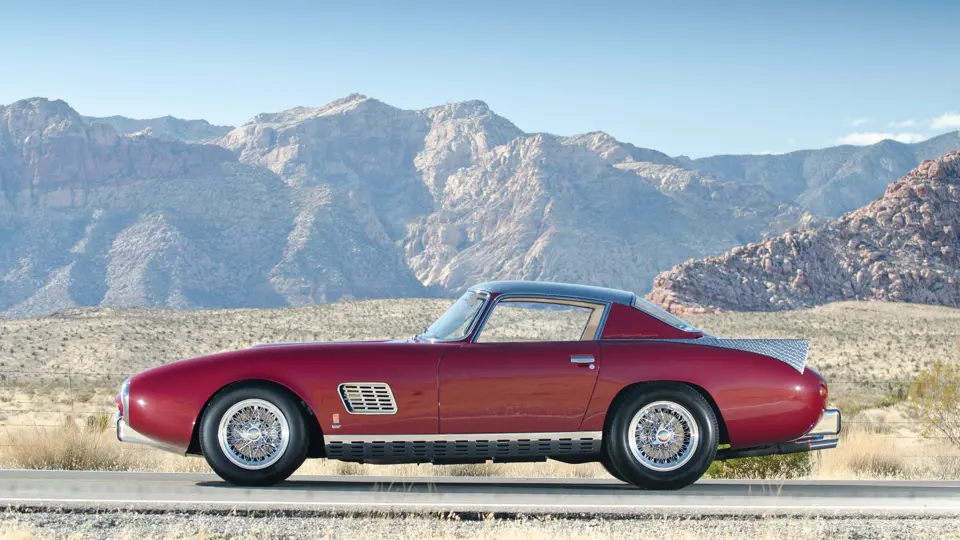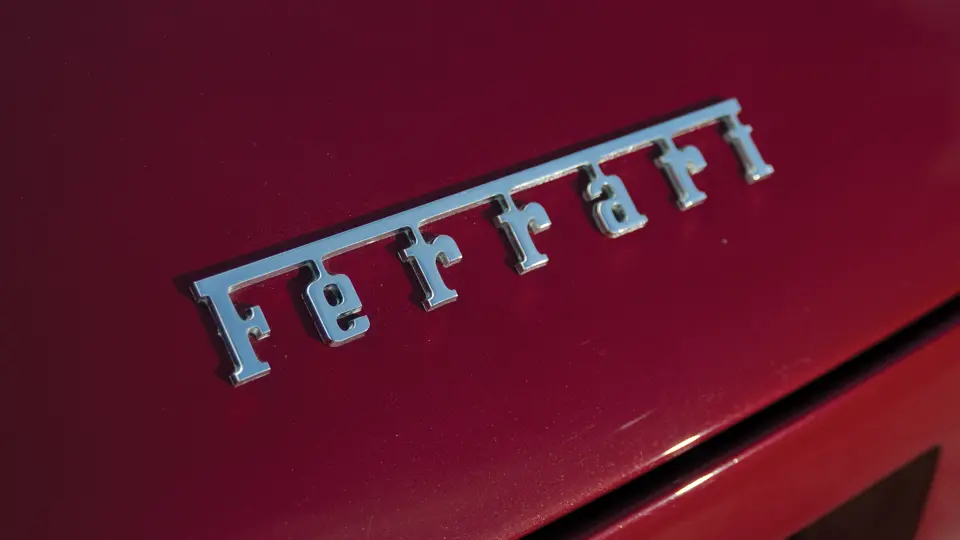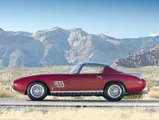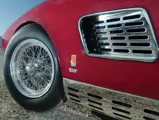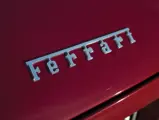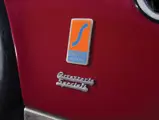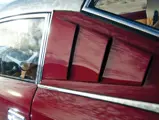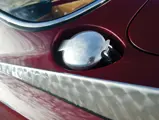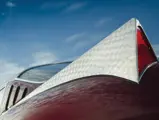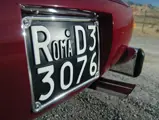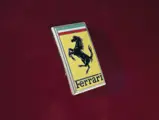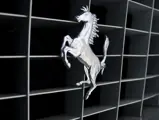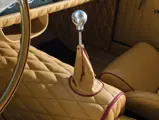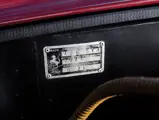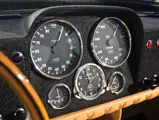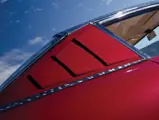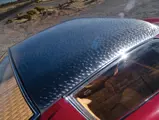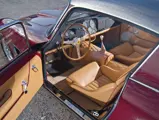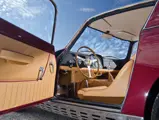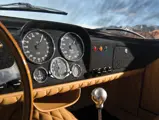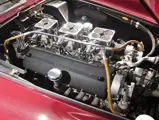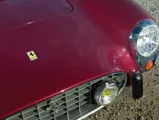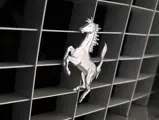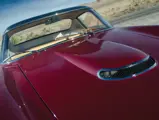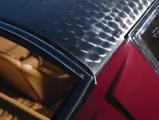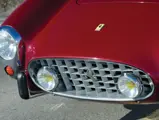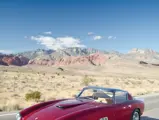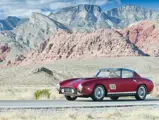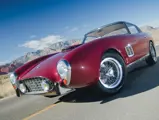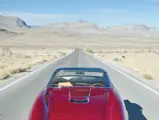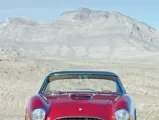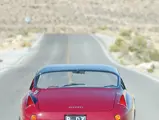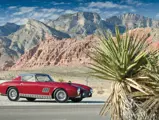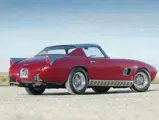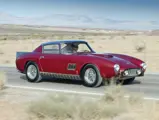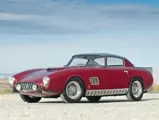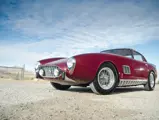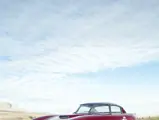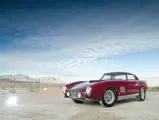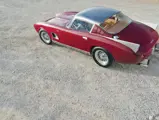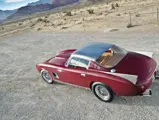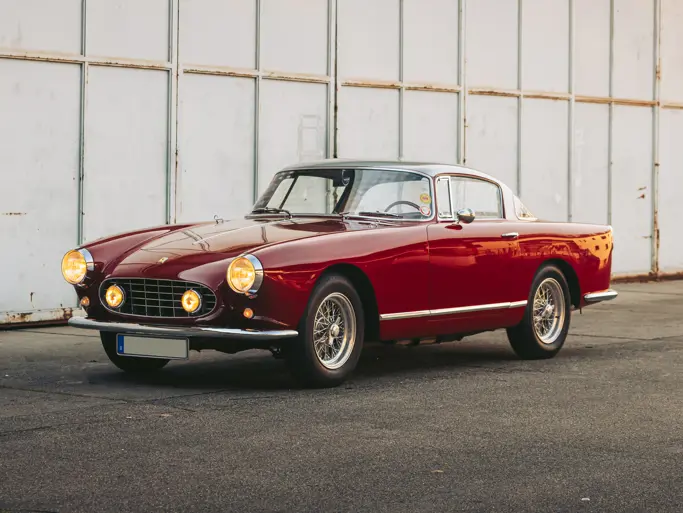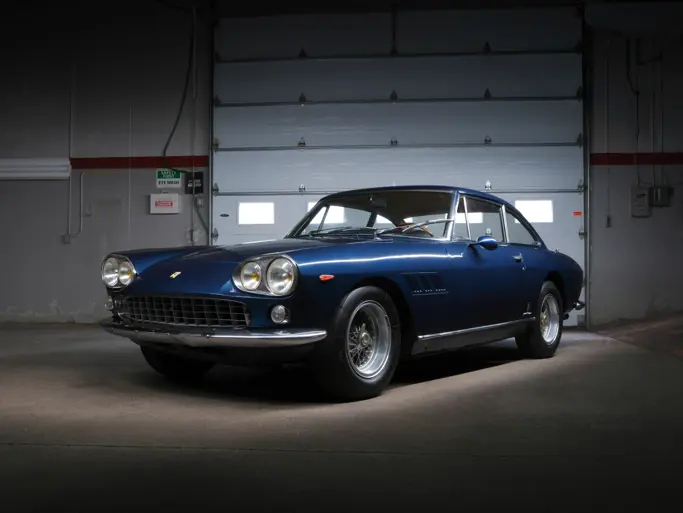340 hp, 4,962 cc SOHC V-12 engine, three Weber 40 IF4C four-barrel carburetors, four-speed manual transmission, independent front suspension with double wishbones and coil springs, rear live axle with semi-elliptic leaf springs, four-wheel hydraulic disc brakes. Wheelbase 102.4"
• Of only 34 Ferrari 410 Superamericas produced, the only one originally bodied by Scaglietti
• A Series II example, built specifically for longtime Ferrari patron Dottore Enrico Wax
• Stunning one-off design, restored by ex-Ferrari and Scaglietti craftsmen
• Pebble Beach class-winning restoration, previously owned by movie and television producer Greg Garrison
There were Ferraris…and then there were Ferraris. Enzo Ferrari always wanted to build a few very exclusive grand touring models for very famous and ultra-wealthy clientele. Constructed in several series, in very limited numbers and most frequently bodied by Ferrari’s favorite carrozzeria, Pinin Farina (known as Pininfarina after 1959), along with Mario Boano and Ghia, the Superamericas were truly the ultimate Ferraris and were nearly all coupes, attracting an exclusive client list.
Noted American industrialists and businessmen like Bob Wilkie, William Doheny and Bill Harrah were Superamerica owners. Royal customers included the Shah of Iran, Mohammad Reza Pahlevi, Prince Bernhardt of the Netherlands and Emperor Bao Dai. Wealthy Italian clientele like ‘Pasta King’ Pietro Barilla and Johnny Walker spirits importer Dottore Enrico Wax headed a list of prominent Europeans who favored the unique and prestigious cars from Modena.
Individually tailored, as Ferrari historian Dean Batchelor said, they incorporated “many detail differences which enhanced their exclusivity.” Traveling in a Superamerica was traveling in style, Batchelor wrote. “The owners knew it, and all who saw the car knew it, which is what the owners wanted them to know.” The 410 Superamerica was essentially a modern coachbuilt car with a powerful, 4.9-liter, 340-bhp, race-derived, Lampredi V-12 engine.
Sergio Scaglietti, who recently passed away in November 2011 at 91 years of age, was a metalworking genius whose designs, including the 250 Testa Rossa, the 250 GTO and the 500 Mondial, are not only among the most coveted Ferraris ever built but also comprise some of the world’s most expensive cars in existence today. Scaglietti, an old Ferrari friend and an immensely imaginative man, built most of his custom bodies without using sketches or drawings. After devising designs in his head, he and his craftsmen fabricated an armature of small steel tubes to establish each body’s framework. Lightweight aluminum panels were then hand-formed and carefully hammered and finished to perfection. The result was a masterpiece in metal.
Just 34 410 Superamericas were built, in three Series, nearly all with bodywork by Pinin Farina. While some of these special models looked somewhat alike, no two were exactly the same. By virtue of their rarity, the four most exclusive 410s consisted of a single Ghia-bodied example, a coupe and a convertible by Boano and s/n 0671 SA, this stunning, one-of-a-kind coupe by Scaglietti.
This 410 SA was unique, right from the outset. S/n 0671 SA was commissioned by Dottore Enrico Wax, a wealthy Ferrari patron from Genoa whose importing firm, Wax & Vitale, S.n.C., sold only the finest goods, like Johnny Walker whiskey and Connolly leather. One of Il Commendatore Enzo Ferrari’s earliest supporters, Dottore Wax could order an exclusive model, and Ferrari would gladly furnish it. The fascinating story of s/n 0671 SA was best told by the late Greg Garrison, one of the most noted Ferrari collectors of all time.
Garrison, whose rare Ferrari collection consisted primarily of exclusive, custom-bodied, mostly one-off examples, was a very successful Hollywood television director who could manage even the most difficult personalities and create the best in fast-paced, live TV programming. He was very private about his collection, although he would occasionally enter a car at the Pebble Beach Concours d’Elegance. Over the years, as he quietly amassed some of the finest Ferraris, Garrison became well known to Enzo Ferrari and visited Maranello on several occasions. In a few instances, he would commission a complex restoration in order to have a model he especially coveted. Chassis 0671 SA is one such car.
In the October/November issue (no. 107) of Cavallino magazine, Garrison wrote a seven-page article on s/n 0671 SA. He began by noting that the exotic Superamerica Series were not cars that just anyone could order. “If you were a Prince or a Princess, a King, a Shah, an international film star, a pasta tycoon or a favorite race driver,” Garrison explained, “you might be allowed to possess one of these cars. These were the glory years, the years of the special car for the special client.”
Garrison noted that in 1956, Dr. Ettore Wax had requested a very different car than Ferrari’s usual offerings. Reportedly, Enzo Ferrari had suggested that, rather than have Pinin Farina design a 410 Superamerica, Sergio Scaglietti would be both the designer and the builder of a very unique example. True to form, Scaglietti’s proposal was stunning—a road car with a distinct competition flavor. The dramatic fastback roof, a pair of prominent fins, the side vents and the boldly vented rocker panels were made of stainless steel, while the rest of the car was lightweight aluminum. Inside, British Smith’s instruments were used in place of Ferrari’s usual Veglia units, and the car was fitted with twin 50-liter fuel tanks. It was a 410 like no other.
An undoubtedly pleased Dr. Wax took delivery in August 1957 and had the car displayed at the Concours d’Elegance late that same year at Lake Como, Italy. Dr. Wax had a history of not keeping his cars very long. In January 1958, s/n 0671 SA was purchased by Count Enrico R.P.A. di Portanuova, who had Carrozzeria Boano personalize the car for him by re-profiling the rear fenders, painting the fins dark red to match the body, extending the front fenders with covered headlights, changing the hood scoop, redesigning the instrument panel to place the speedometer and tachometer in front of the driver and re-boring the V-12 to a 5.1-liter displacement.
The 410 SA was sold again in 1961. It passed from Switzerland to Texas. In the 1970s it was sold to Gary Wales in California, followed by Stan Sokol. Then, sadly, it was stolen. The thief inexplicably removed the body, disposed of it and sold the complete running chassis to a Grants Pass, Oregon farmer. By this time, the car had effectively disappeared. Greg Garrison had seen one of the few photos of s/n 0671 SA. Struck by its beauty, he wanted very much to find it.
In 1986, after making inquiries, Garrison learned the chassis had been spotted several times in Oregon. He placed advertisements in local newspapers, offering a reward for information. A caller revealed the location; Garrison verified the serial numbers and bought the car, which consisted of the V-12 engine, transmission, driveline and rear end. Within a day, the chassis was flown to Italy. Not long afterward, Garrison, who had completed a benefit for muscular dystrophy honoring Dino Ferrari, had an audience with Enzo Ferrari in Maranello. He showed Il Commendatore a photo of s/n 0671 SA.
Garrison wrote that Ferrari “did something I had never seen him do before. He took off his dark glasses, placed them on his desk, held the photo at arm’s length and brought it slowly forward until it came into focus for him. He looked at me and said, Dr. [Enrico] Wax...1956...Distributor Johnny Walker whiskey.”
Garrison told Ferrari he had found the chassis of 0671 SA and he planned to have the car restored. What happened next, as Garrison told it, is truly remarkable:
I left his office and went across the street for lunch. Within half an hour, at least eight people from the Factory, including Sergio Scaglietti and the head of service, Gaetano Florini, came to me and said they would consider it an honor to work on the car and bring it back to its original condition. Sergio arranged for the acquisition of the original sketches, work sheets [and] all the Factory photos that existed. He coordinated the return of four retired Scaglietti workers who created the car originally to reconstruct their work at the shop of Carrozzeria Sport Auto, Bachelli & Villa, Bastiglia-Modena. Florini arranged for Gianni Deana and Aldo Silingardi of Sport Auto Modena to perform all the mechanical work. A little over two years time was required for s/n 0671 SA to rise from its ashes. Four weeks after the car returned to California, it won Best in Class at the (1990) Pebble Beach Concours d’Elegance.
From every angle, s/n 0671 SA is a treat to view. From its brushed stainless roof panel and matching fins to the uniquely-shaped headlight rims flanking the traditional Ferrari egg-crate grille, this coupe spells power and speed. Sharing a few visual elements with the famous Pininfarina Superfast coupe, s/n 0671 SA sports sail panels that are reminiscent of a 250 Tour de France Berlinetta. Its bold grille reminds admirers of Ferrari’s early 250MM competition cars. The rounded tail panel is unique to this car. Inside, the speedometer and tachometer are centrally located, like a 250GT Lusso, with other instruments placed in front of the driver. With its triple four-bbl Weber carburetors and increased displacement, s/n 0671 SA arguably develops considerably more power than the twin-choke Weber-carbureted ‘standard’ Superamerica’s Lampredi engine.
Sadly, Greg Garrison died of pneumonia in 2005. In 2007, presented by a new owner, s/n 0671 SA won Best of Show at the first Las Vegas Concours d’Elegance. Restored in Italy by its original craftsmen, this powerful, one-of-a-kind, award-winning 410 Superamerica has been well maintained and has recently received a light service to ensure excellent drivability. It awaits the open road, where it will deliver the caliber of performance enjoyed by a very few, fortunate, exotic car owners.




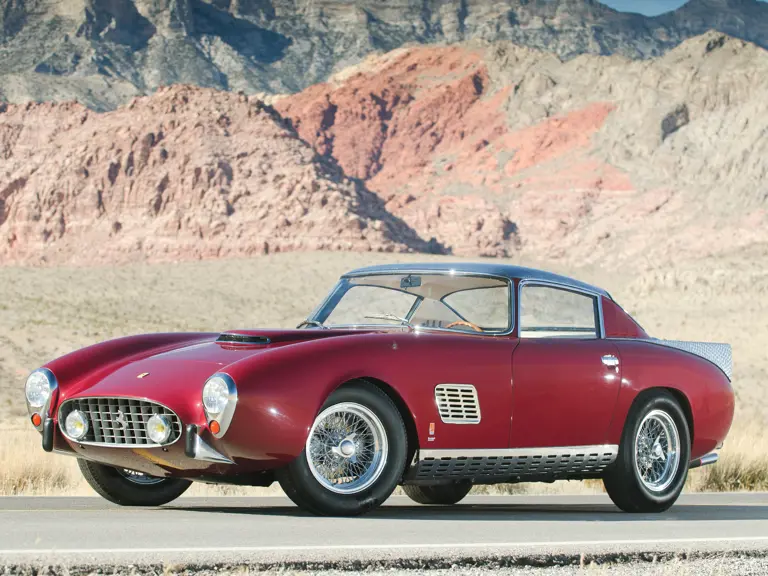
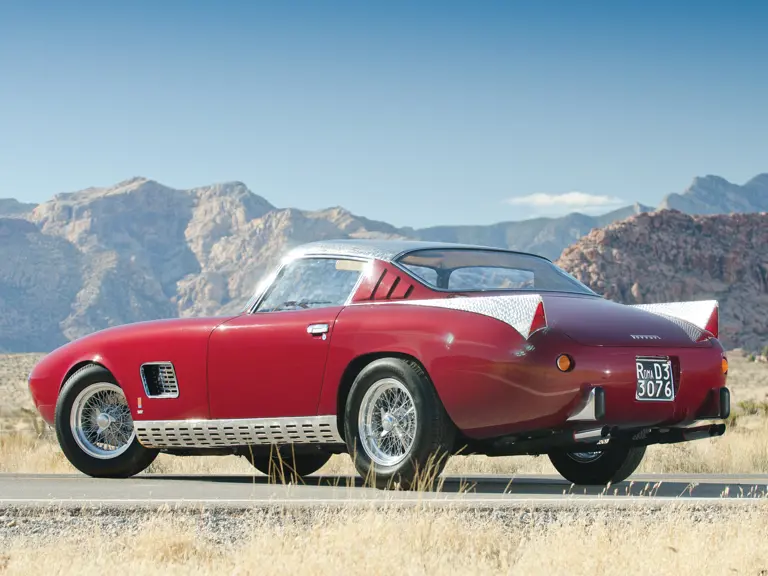
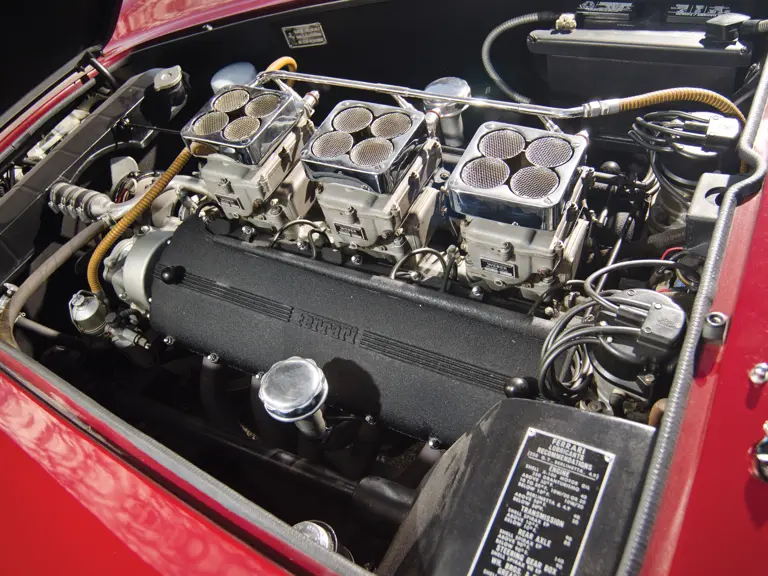
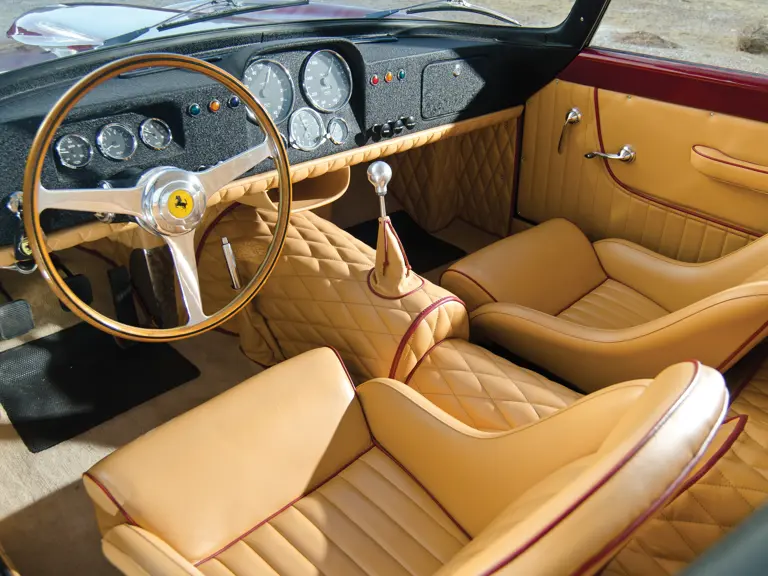
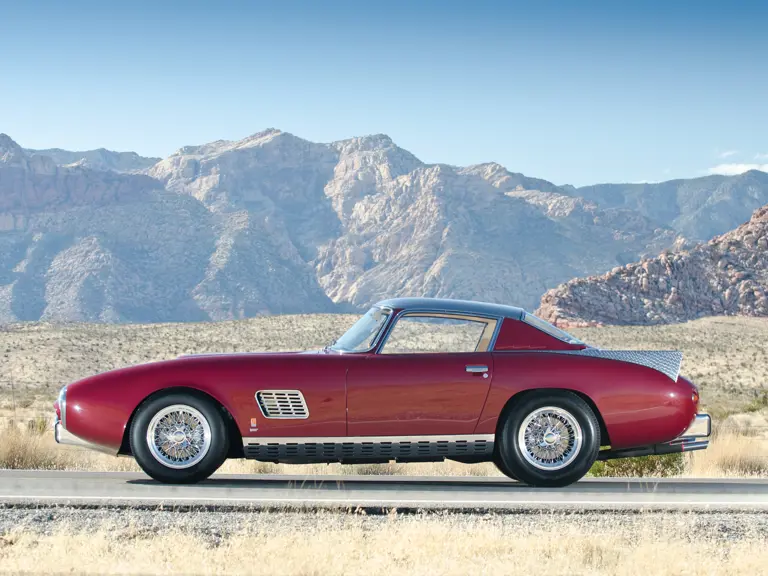

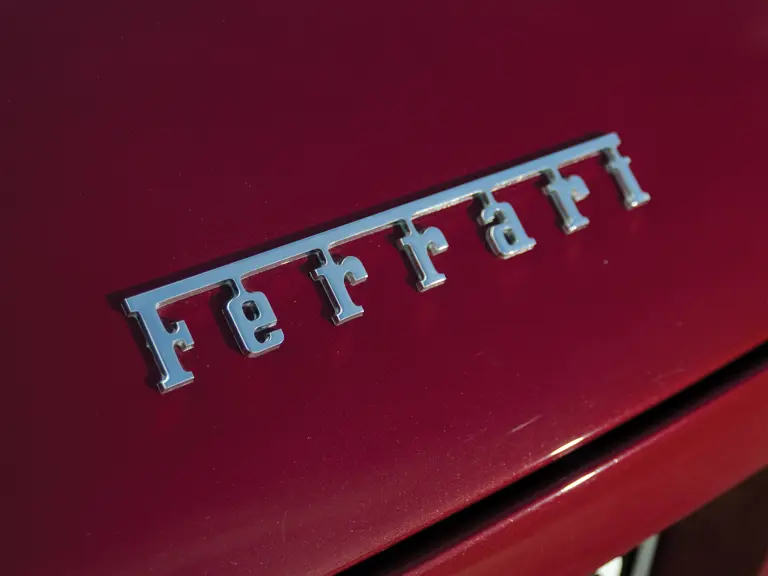
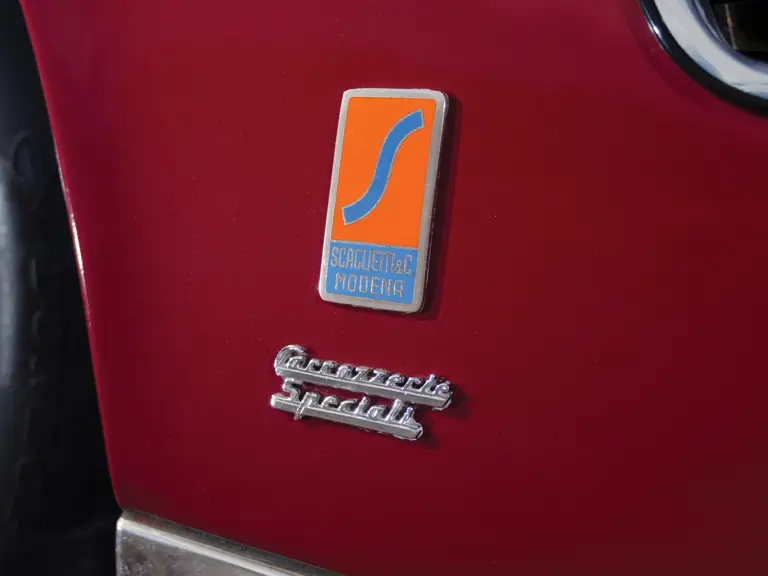
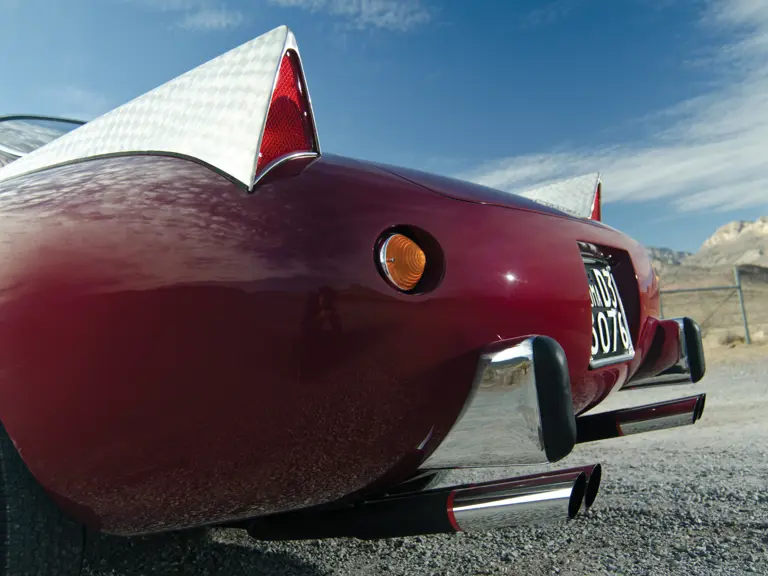
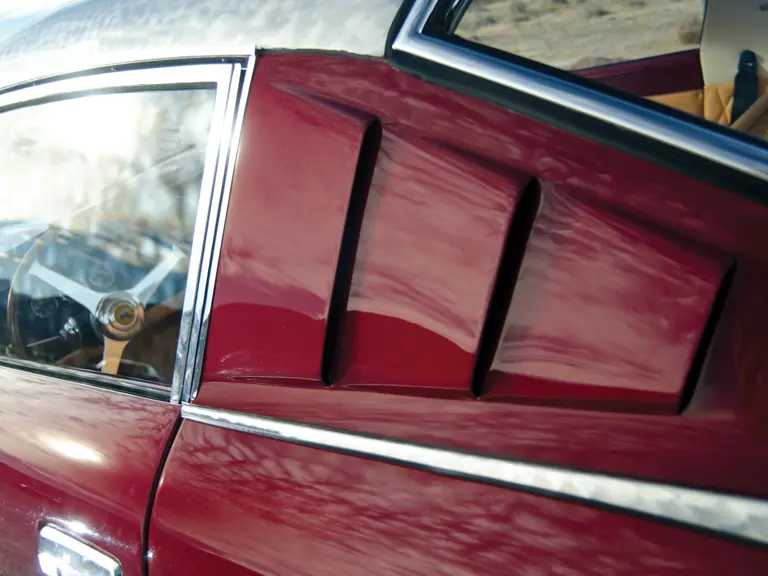
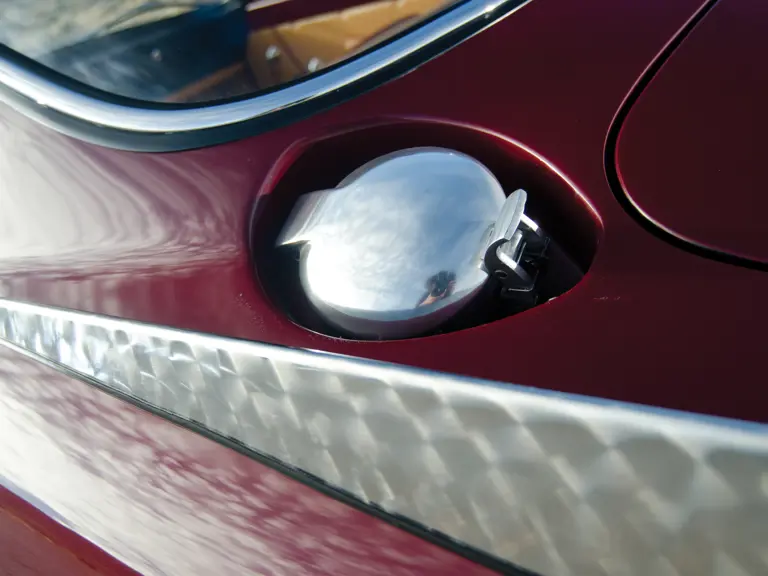

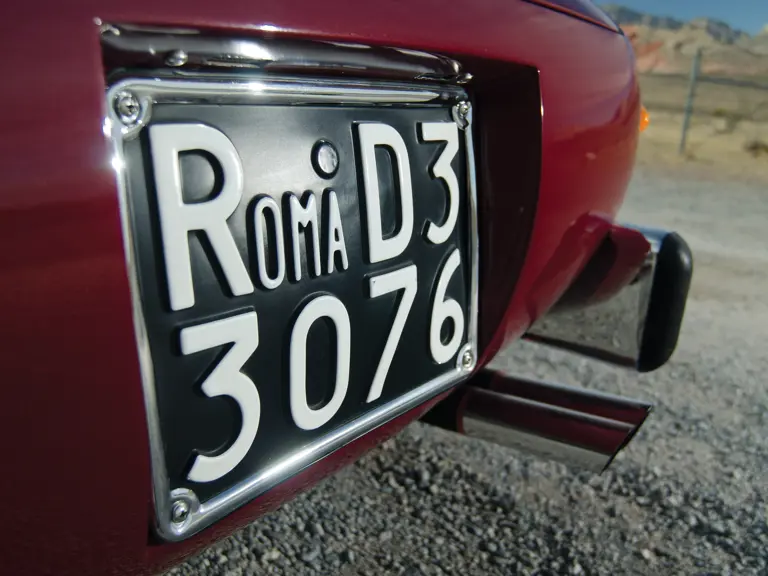
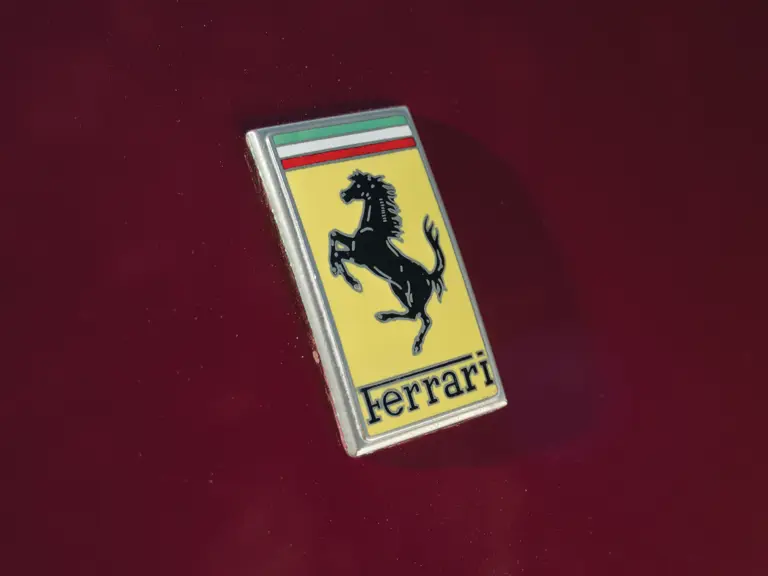
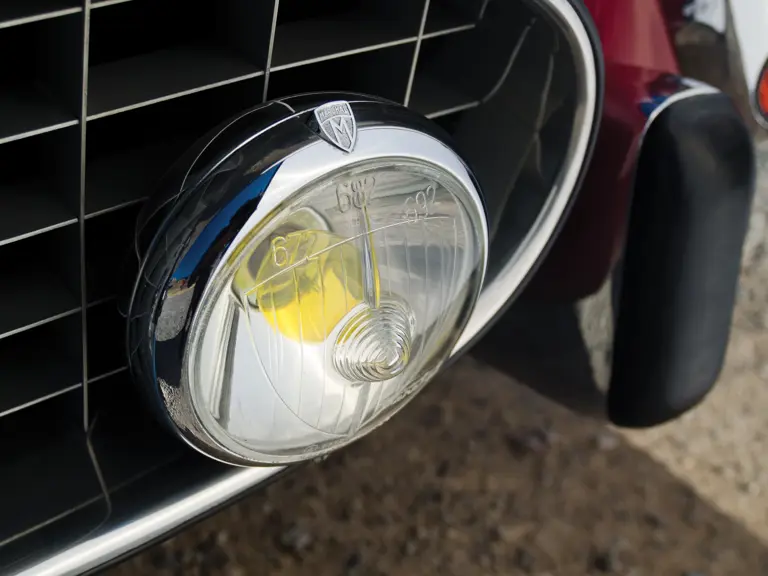
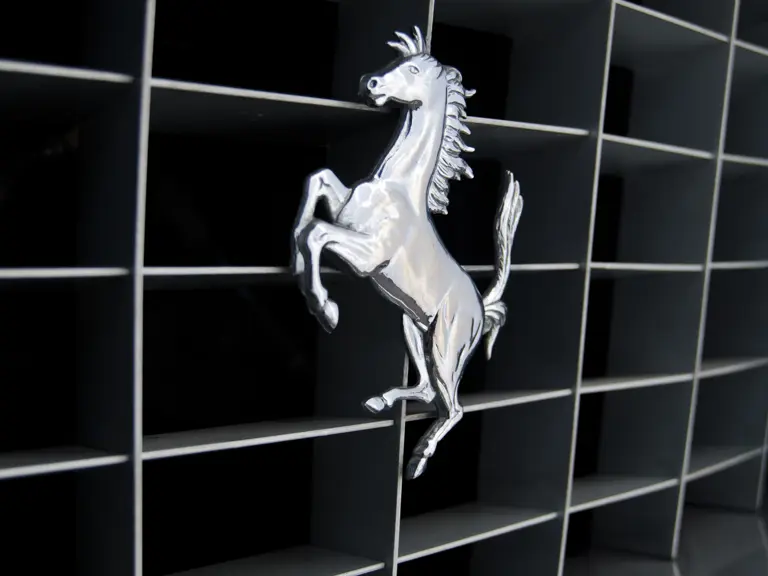

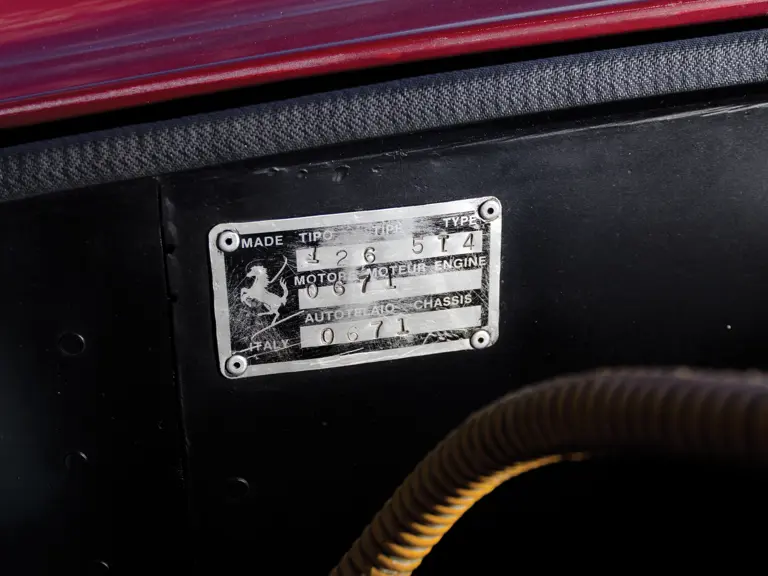
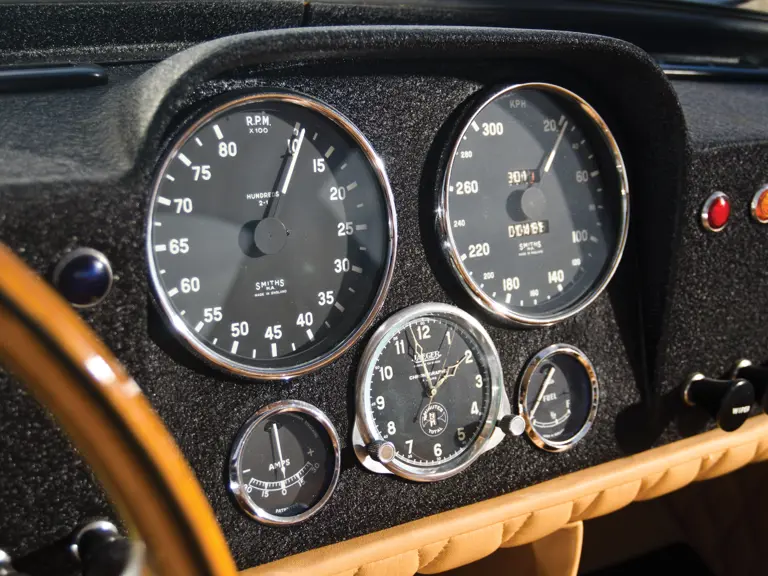
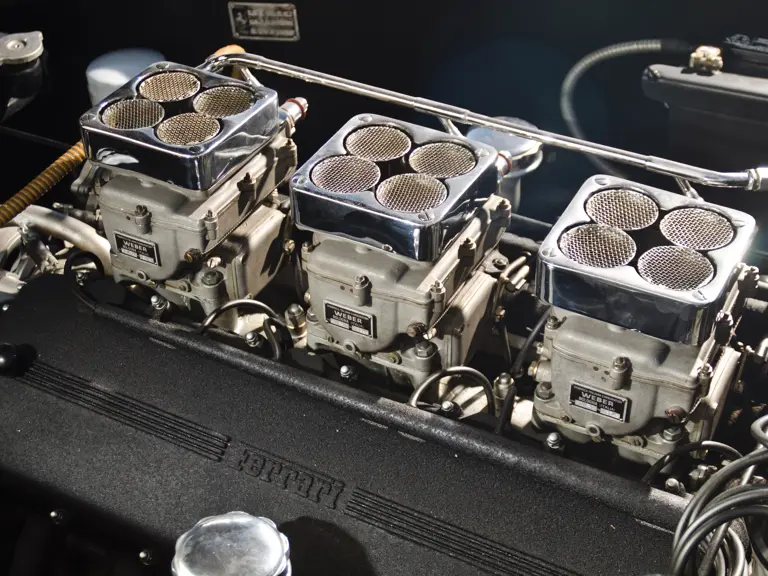
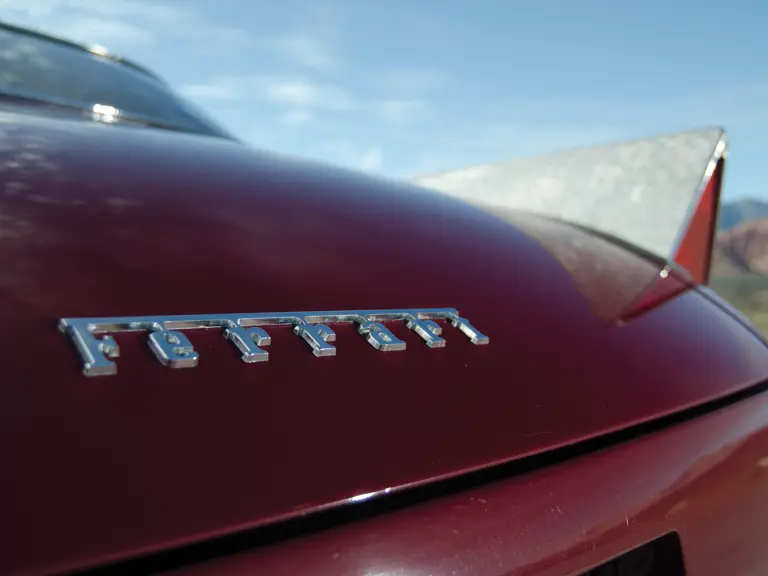
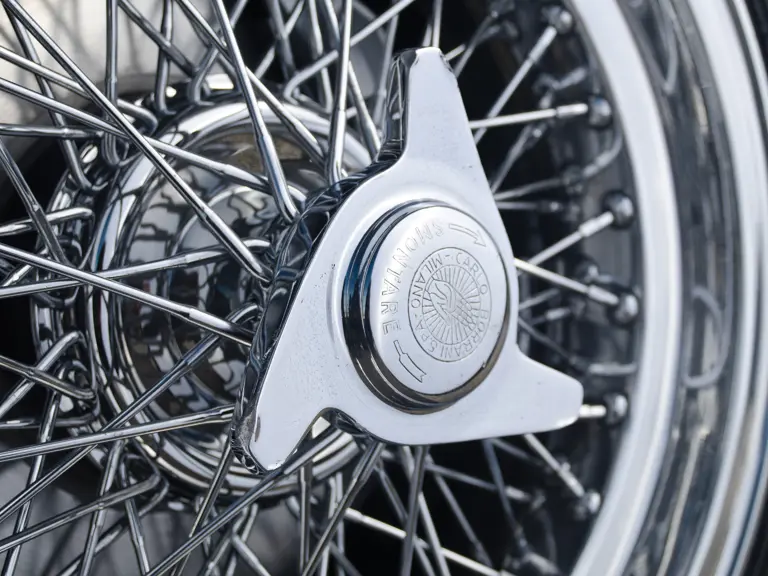
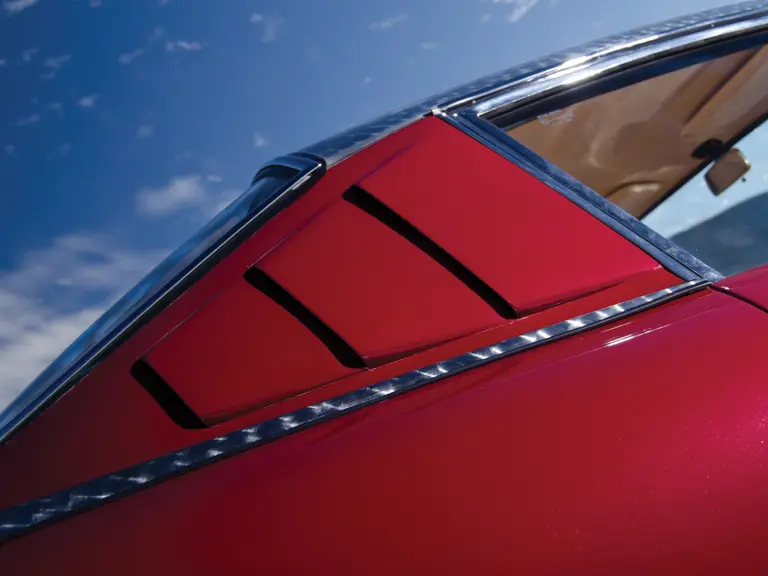
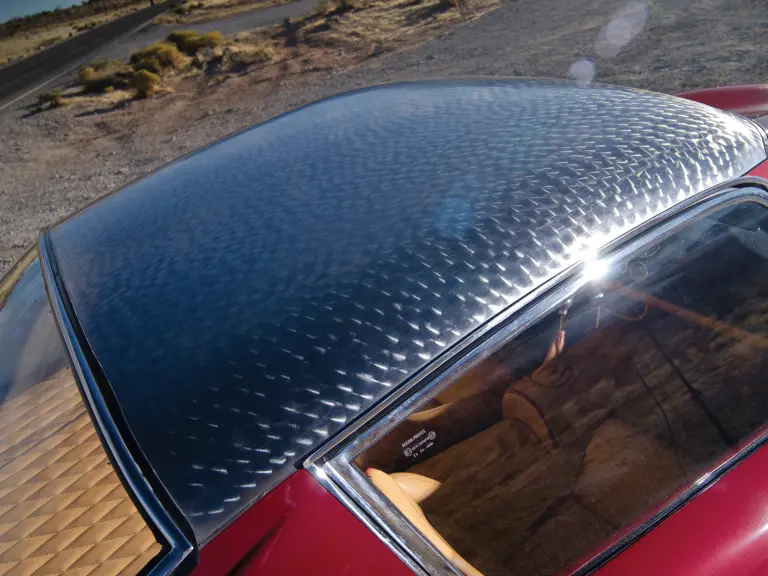
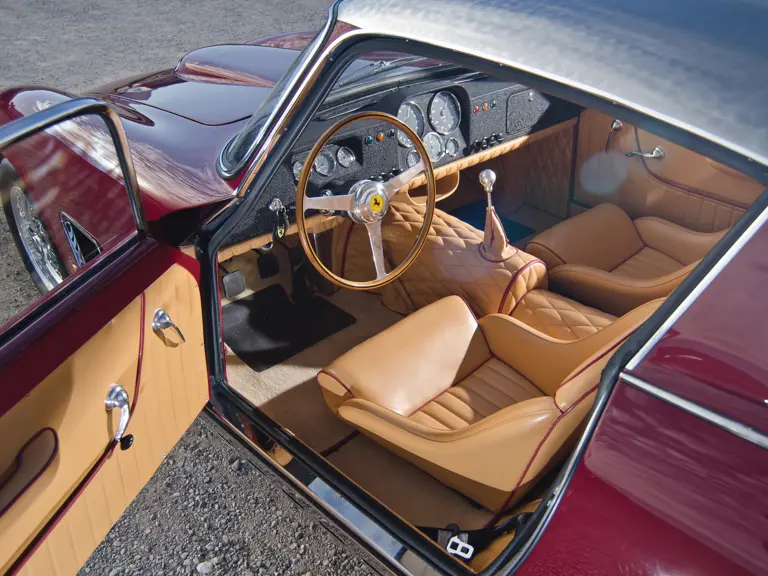
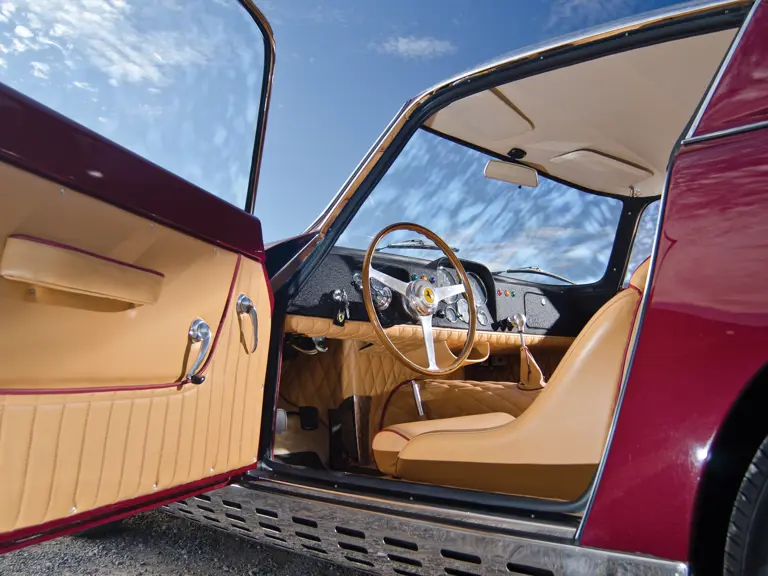
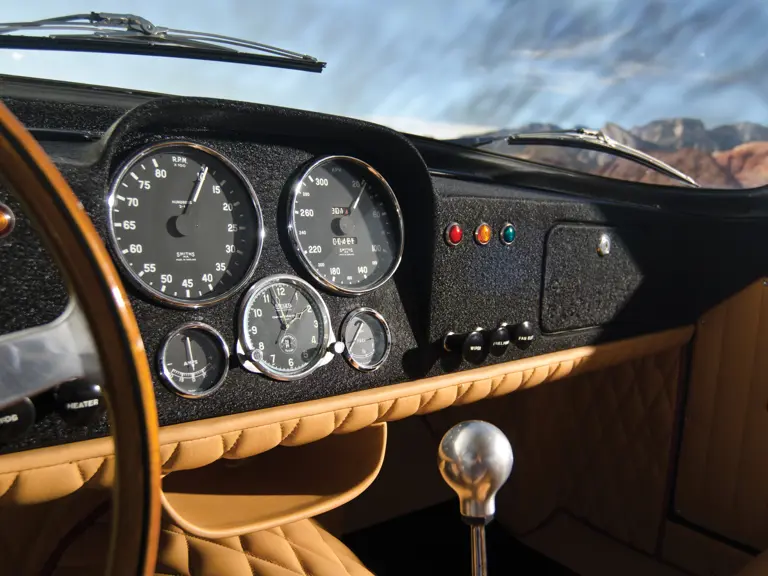
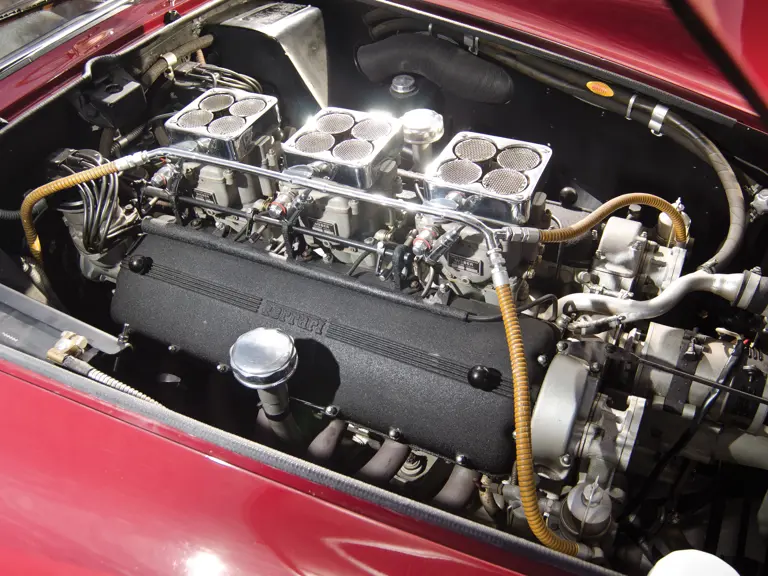
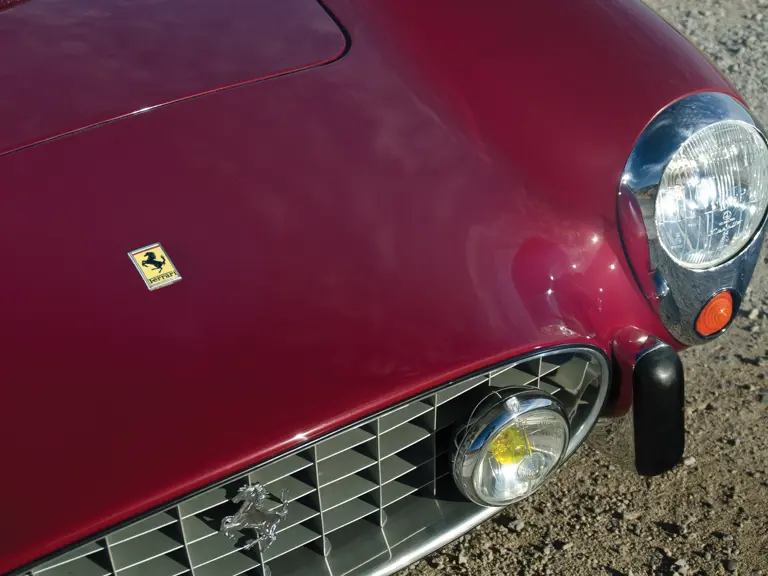
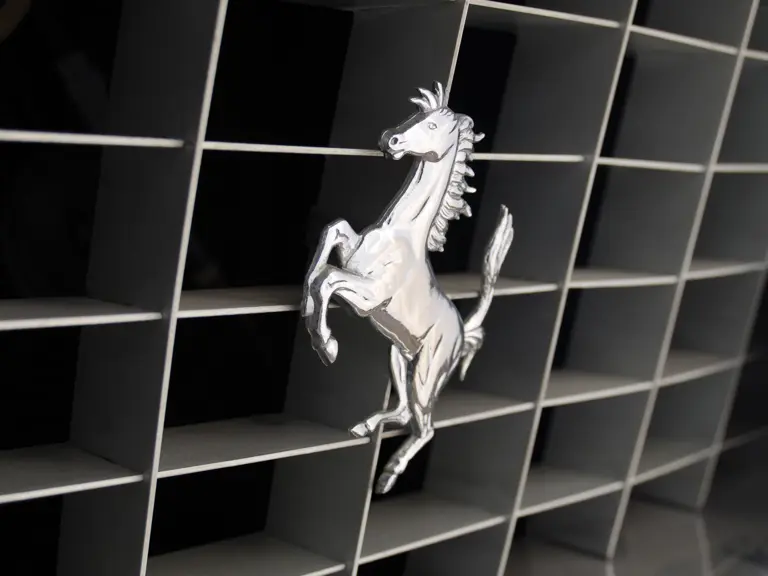
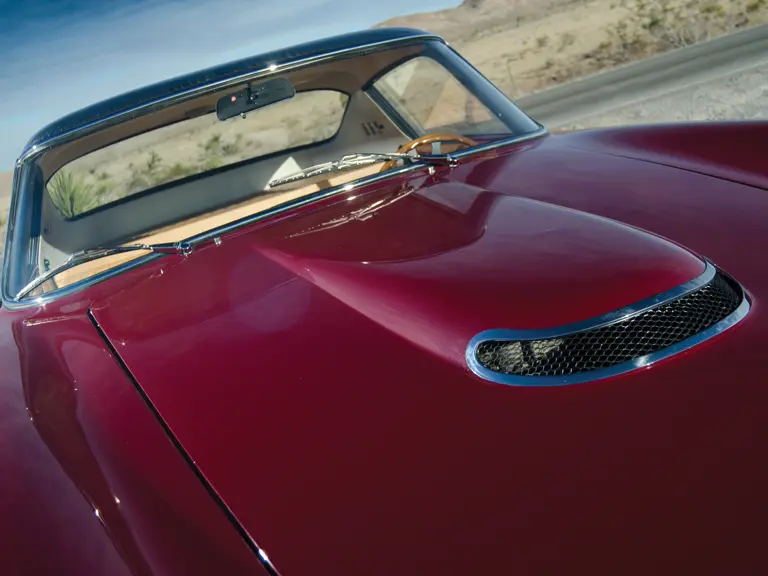

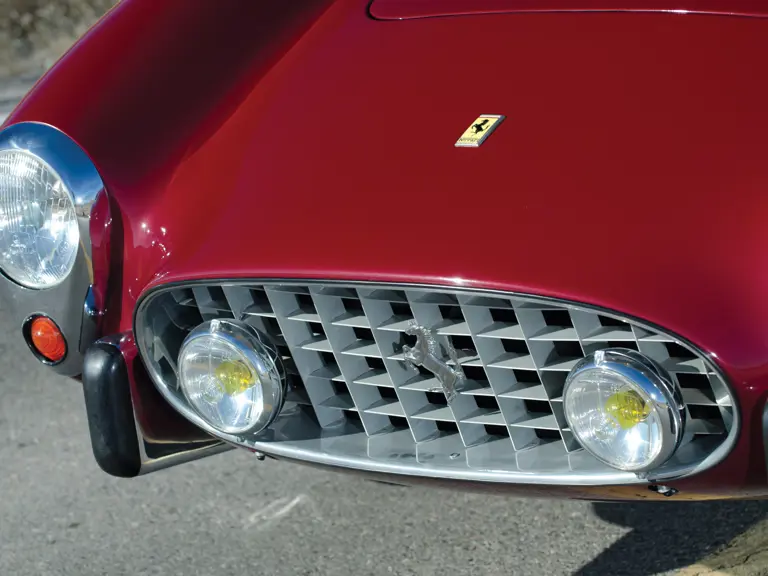
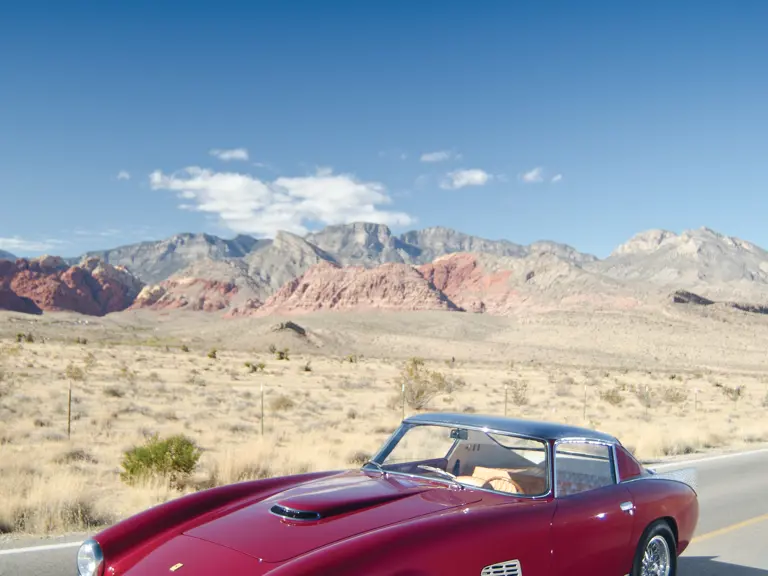
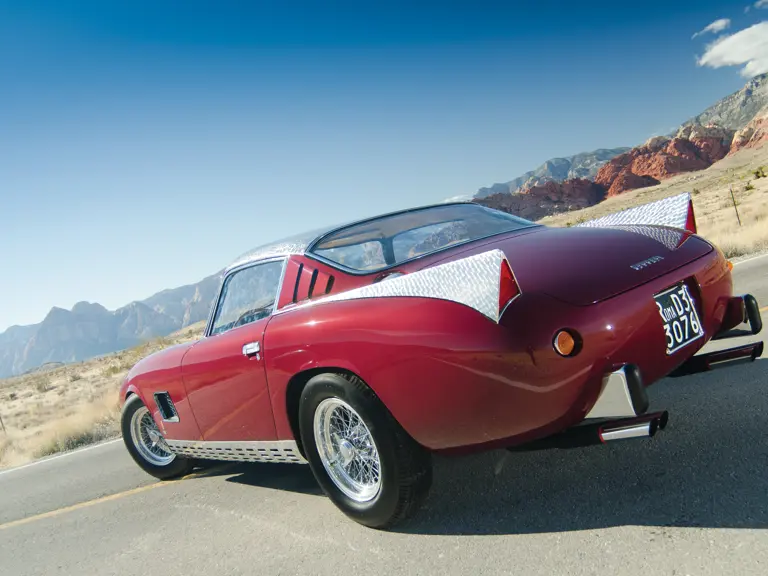
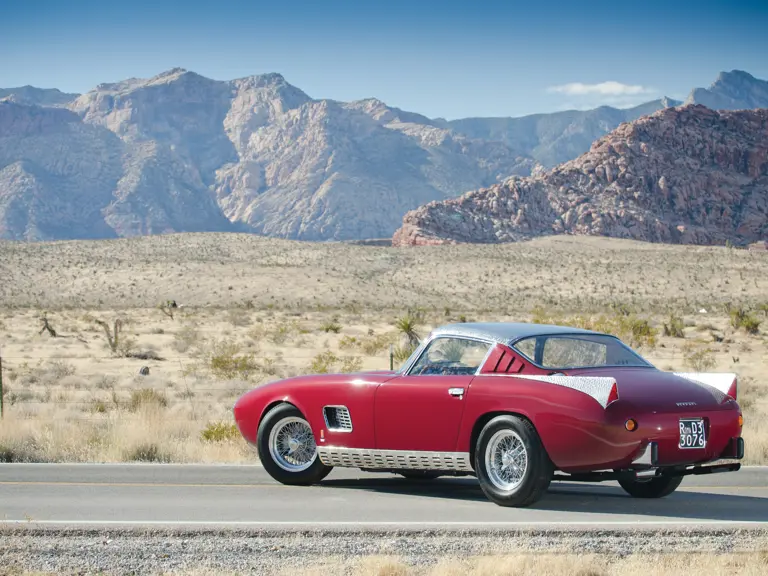
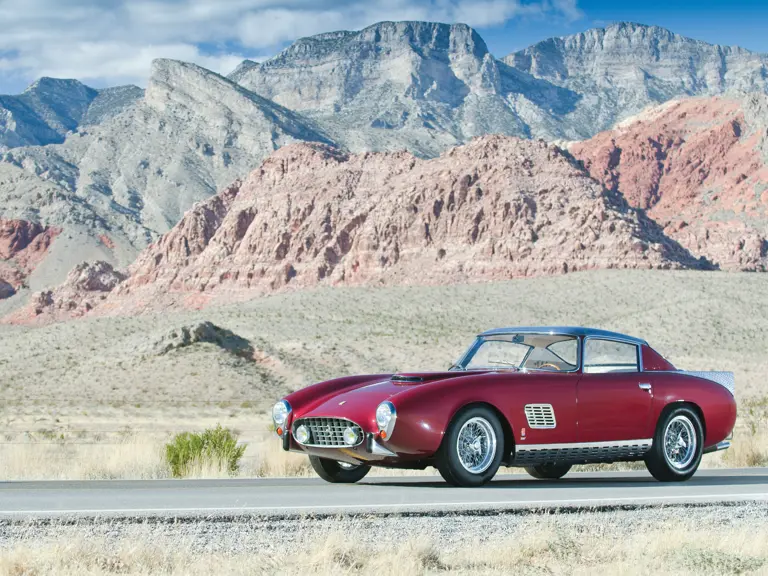
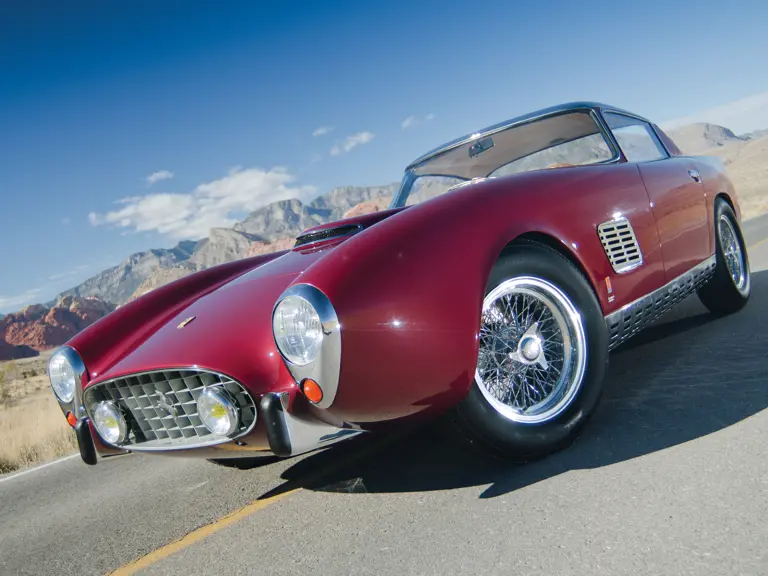
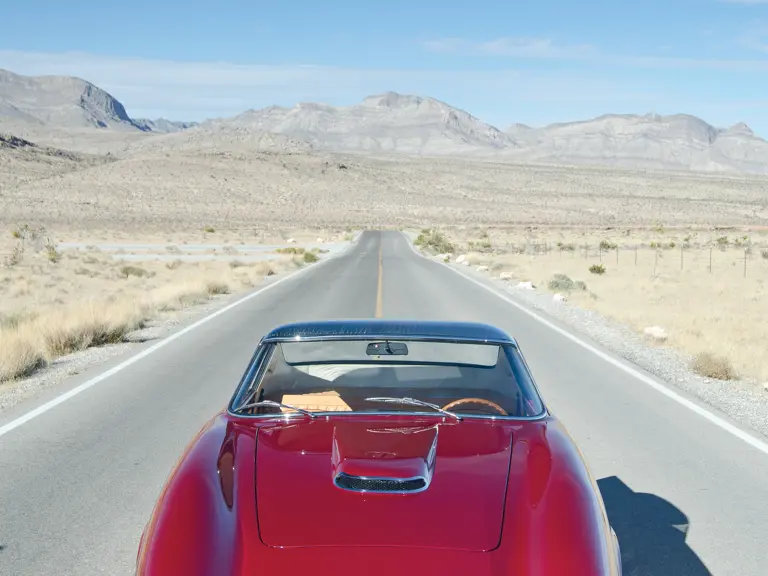
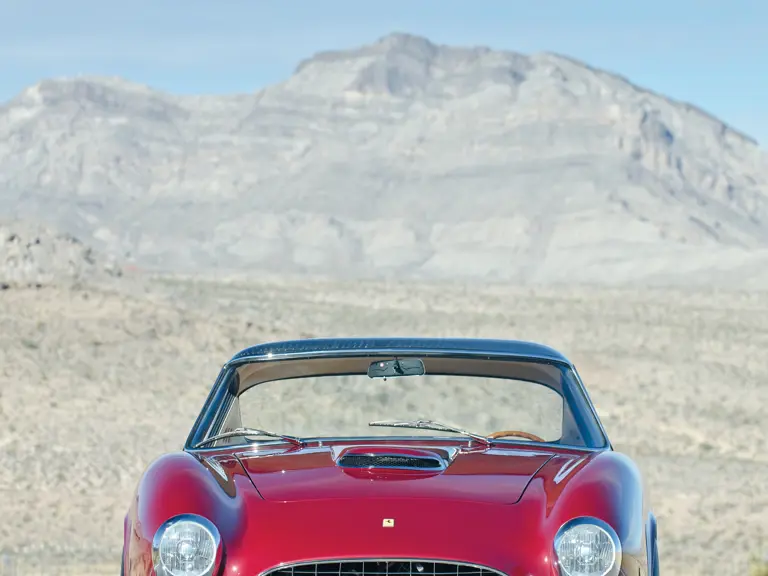
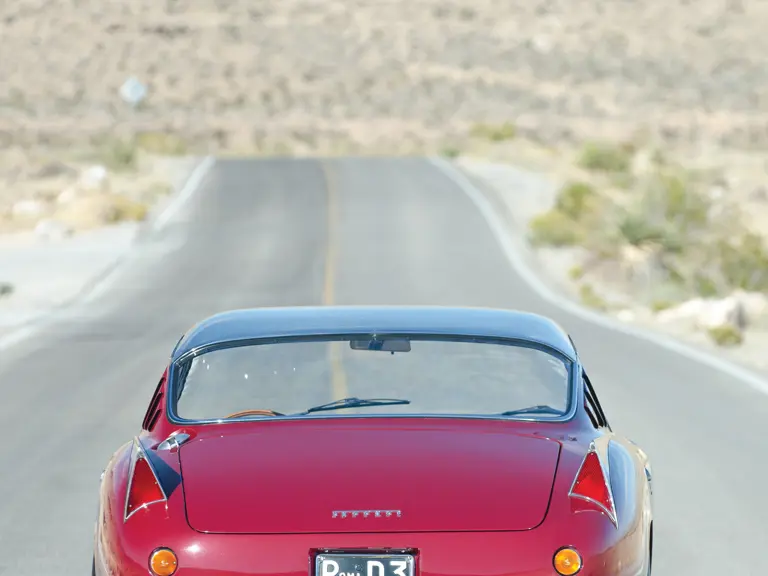
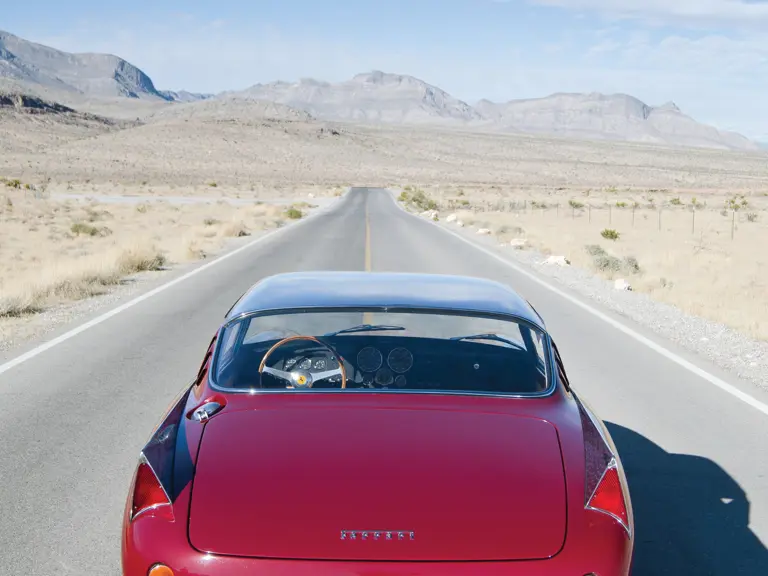
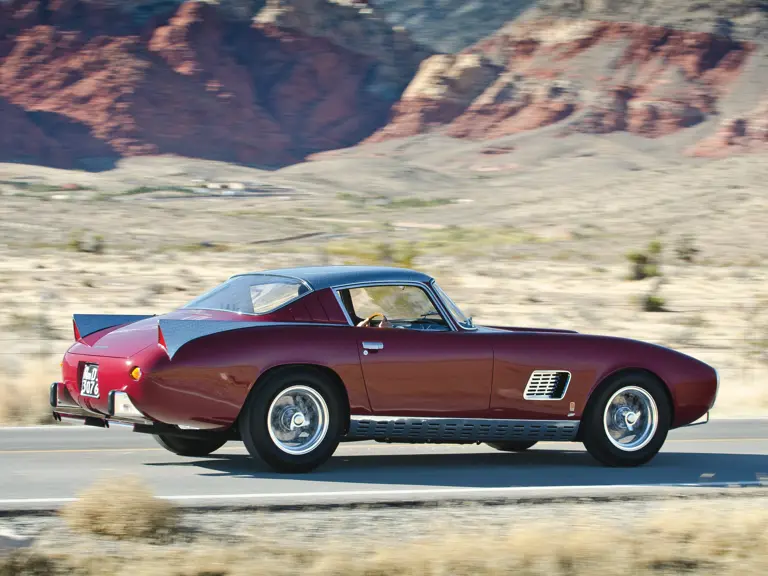
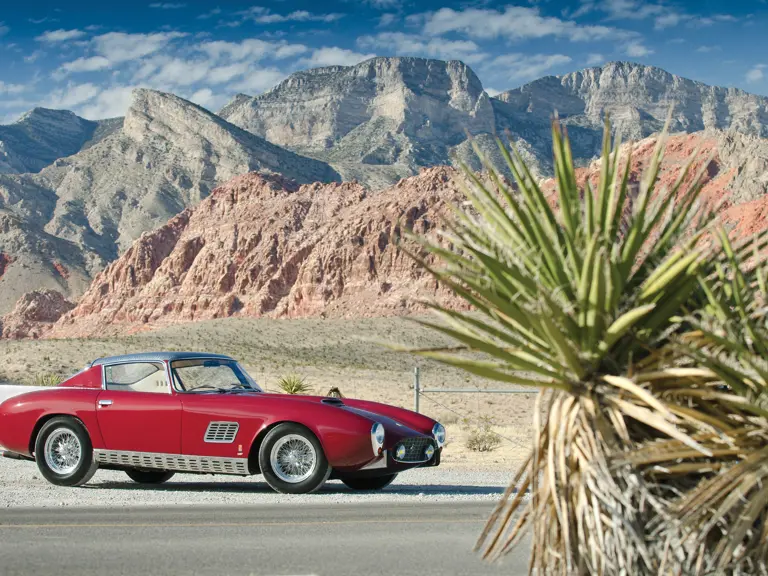
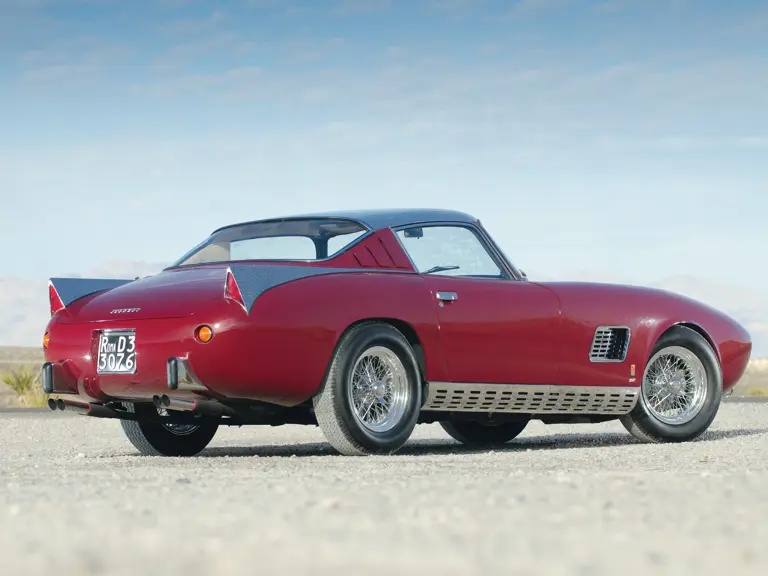
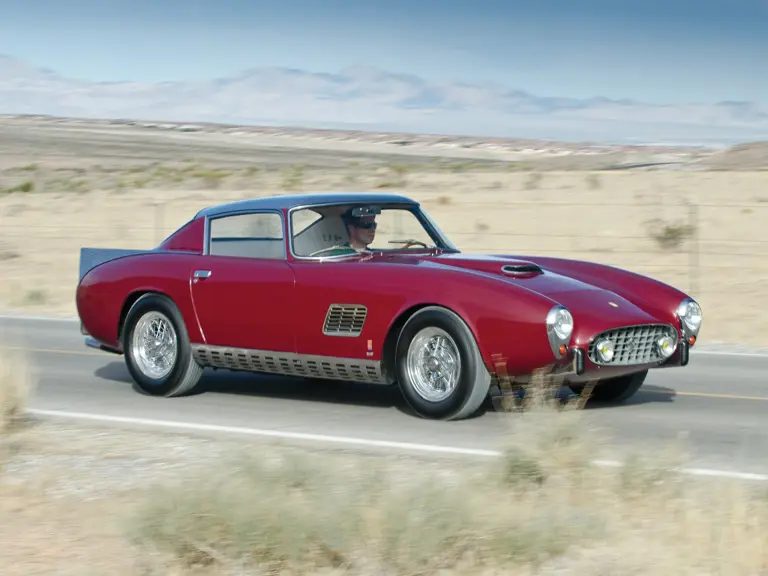
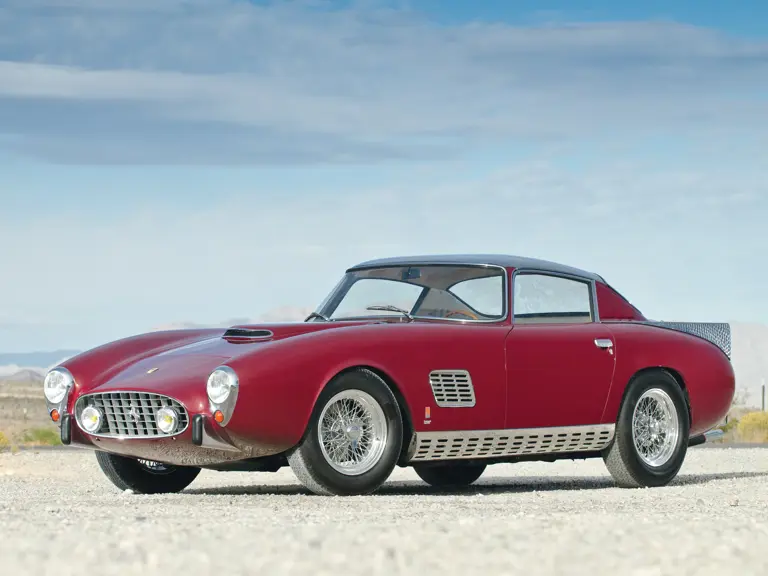
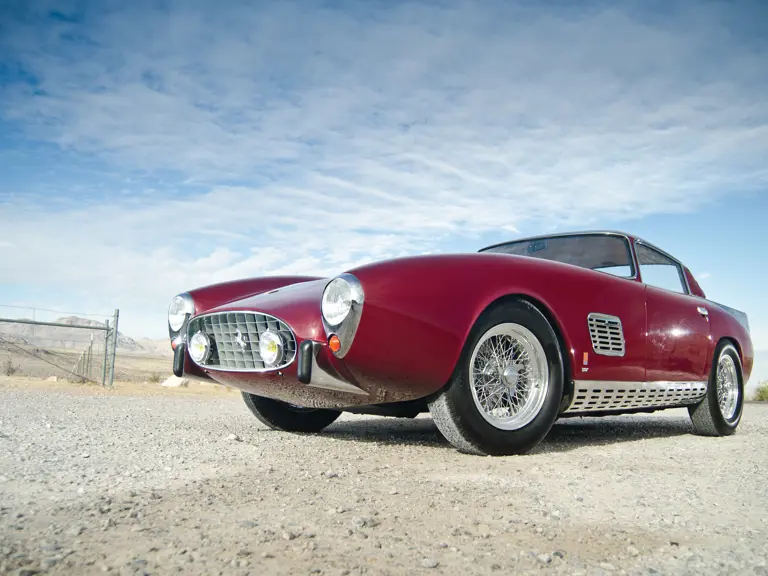
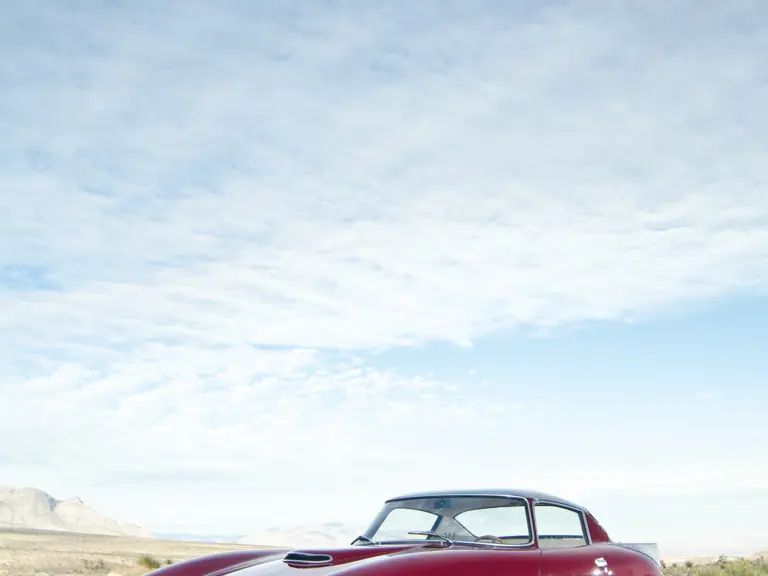
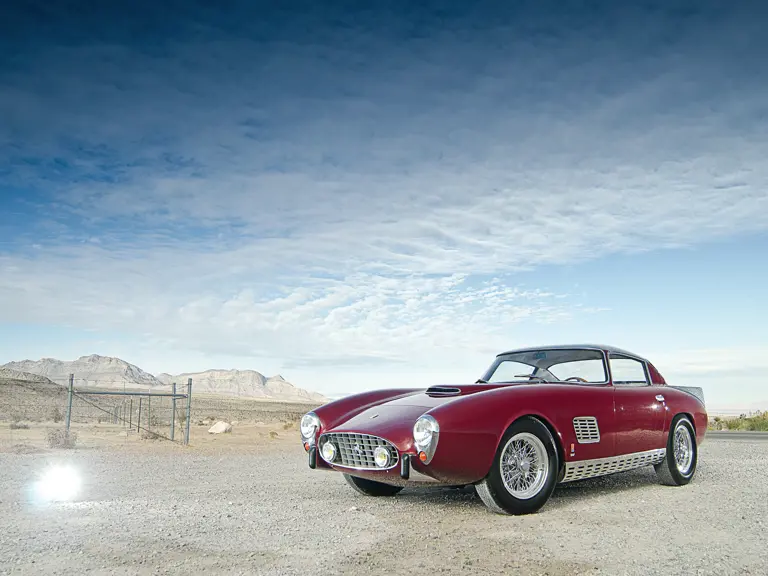

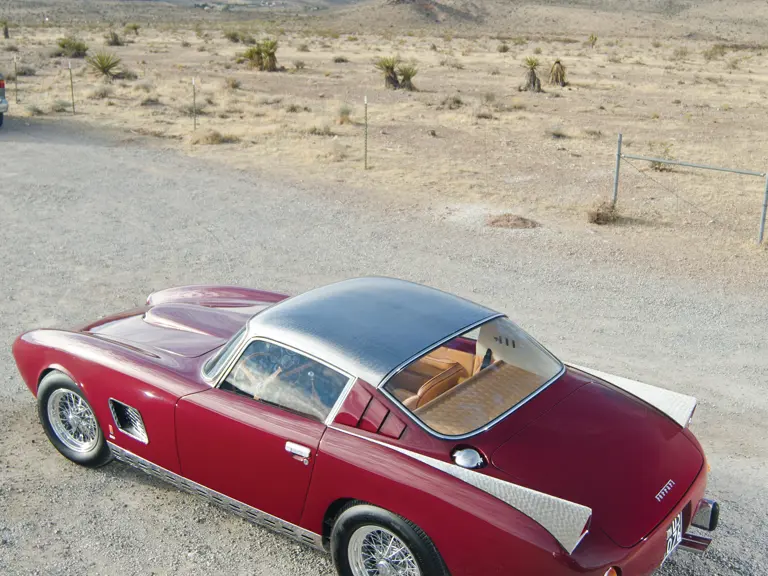
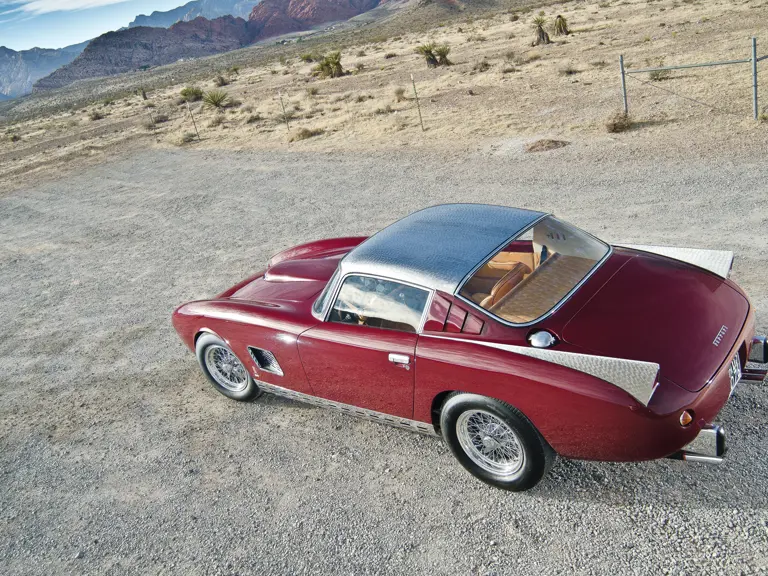
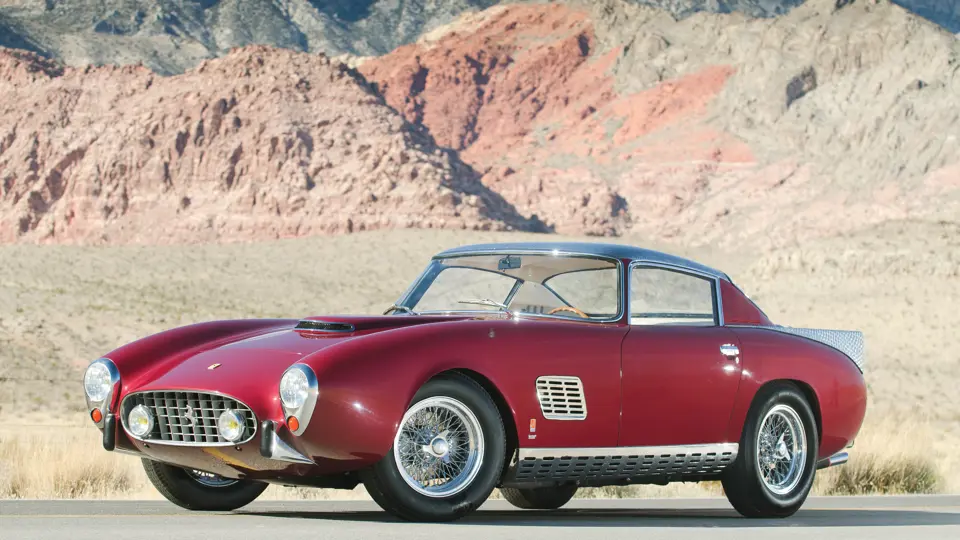
 | Phoenix, Arizona
| Phoenix, Arizona
